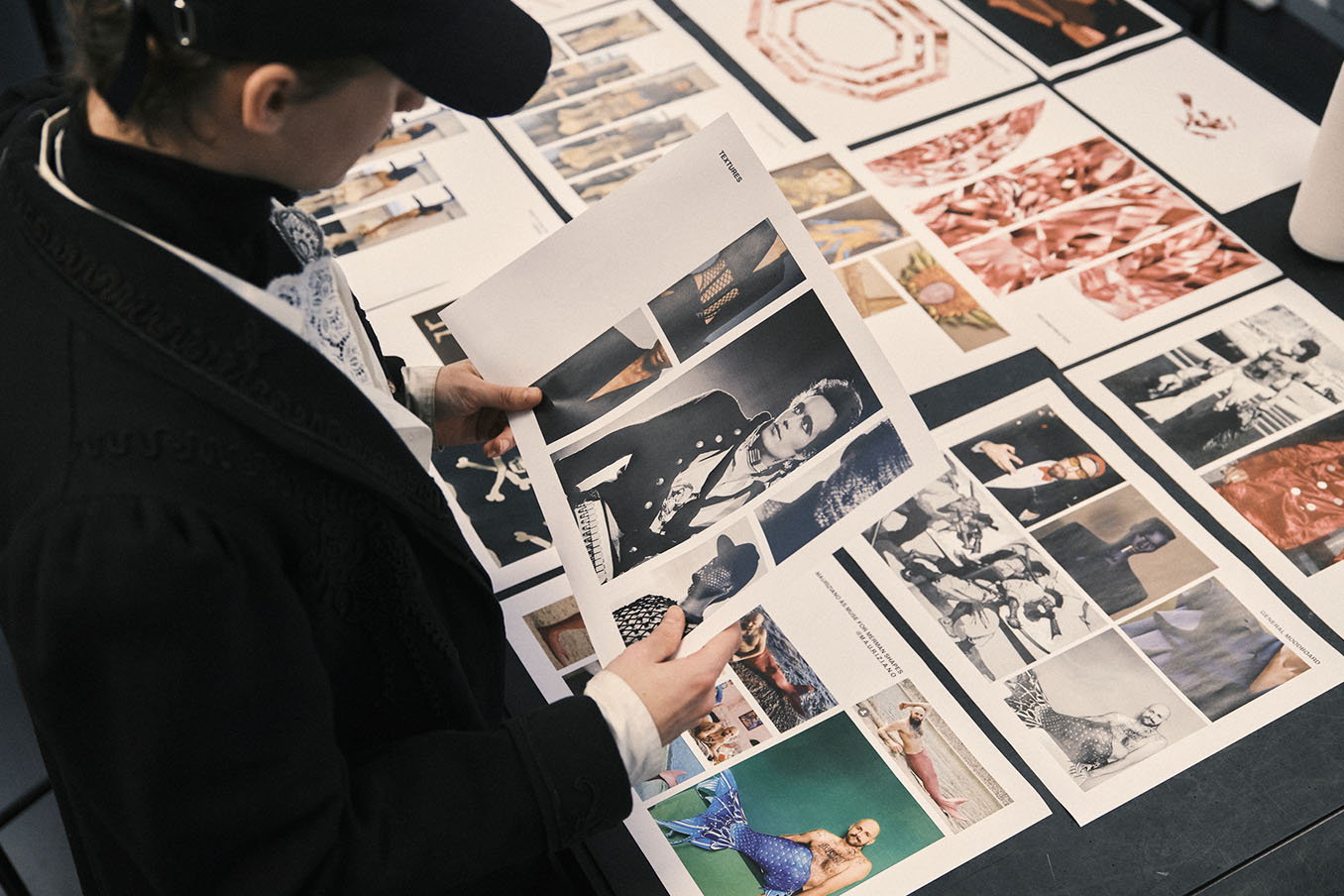How does film making and art direction intersect in the fashion context? Undergraduate in Fashion Art Direction students have just come out of an almost year long project with Gruppo Florence, to create the docu-film Le Mani della Moda (The Hands of Fashion), that recounts the artisanal, family-based, high fashion productions all over the Italian peninsula who drive Made in Italy and contribute to the world’s fashion industry with their expertise and know-how.
Perhaps we don’t always associate art direction with filmmaking, however the students who participated in this project make a strong case for it. Third year students from Undergraduate in Fashion Art Direction were divided across different departments of docu-film making, from direction, to script writing, and editing, as well as many others. Phoebe Owston, editor of the Journal, spoke with three students from these areas, Director Anna Setliff, Screenwriter Chiara Schleifer, and Editor Francesco Lasagni.
The process of making a docu-film is complex yet exciting for a student. The role of Director involves a great amount of research before filming even starts, claims Anna, “it was essential to research what kind of story we wanted to tell.” This started with watching the previous episode of Le Mani della Moda and working for almost three months on the screenplay and storyboards, as well as writing out interviews before two weeks of shooting. “ The production side of things was a huge learning curve”, says Anna, and learning how to operate a camera and working with the crew were highlights. She also enjoyed working with editors in the latter stages, meaning going through all the different footage, syncing audio, and then building the storyline.
Director is a role that intersects with many others, like that of screenwriter Chiara who, together with the other students in her team, started by preparing all the pre-interviews to do before shooting. The pre-filming interview process is essential because it helps the screenwriting team establish a red thread and storyline. They also visited the companies beforehand to understand how people worked, and the movements and artisanal practices that they should include in the film.
Working closely with the three student directors of the film, as well as the other screenwriters, teachers, and Gruppo Florence more widely, Chiara’s task was to ask questions to the interviewees, Gruppo Florence’s member companies, and then extract the keywords of these interviews to build the docu-film’s narrative. They then went back to the drawing board, thinking of questions for the real filmed interviews that would give them the answers that would follow the story telling they wanted.
One of the final stages of the filmmaking process is the editing stage: Francesco worked together with two other editors, Karim Farekh from the directing team and Anneli Petrą Shadel, with a strong musical background. This meant the working process was divided well into different areas: Karim had an overall vision of the film, Anneli had a good sense of how and when to edit in respect to the music, and finally Francesco, being Italian, had a good sense of where to edit in relation to the various stages of dialogue.
Of course, a film making process isn’t without its challenges. Anna noted that one of the challenges of being a director is the necessity to have foresight, in order to capture all the footage for the eventual editing process. Screenwriter Chiara cited differing points of view as a challenge, as well as having to get used to changing quickly, as on location things don’t always go as they were planned. Francesco, on the other hand, said that working to deadlines and having limited time was often a challenge.
These students were catapulted into a professional filmmaking world, and their courses at Polimoda helped prepare them for this. Anna noted how the support from her teachers, Gruppo Florence, and the classes they had in previous years on Fashion Film and Art Direction, were essential: “it helped us compartmentalize a story and build it up to make a whole.” Francesco, on the other hand, really appreciated the editing classes held by Gabriele Dente previously on his course, as he felt it gave him a “good basis”, even though he never expected to be chosen for one of the more technical roles of the film.
All three students agree with the fact that filmmaking and Art Direction is about synthesizing diverse elements – people, perspectives, technical skills, creative ideas – into a unified, meaningful narrative. Chiara is particularly emphatic when she talks about the importance of art direction for filmmaking, “The value of art direction lies in making something make sense, transporting a message in every possible way, whether through photography, runway, or through film or advertisement. For a film, an Art Director can create a message and a storyline that is complete.”
ACCOLADES
Episode two of Le Mani della Moda has won Best Fashion Film at the Mannheim Arts Film Festival, continuing its journey of submission to major international film festivals dedicated to fashion film and documentary.
The film has already achieved the following results:
Winner – Best Fashion Film | Mannheim Arts Film Festival
Quarter-Finalist | Australia Independent Film Festival
Official Selection | ASVOFF17
Official Selection | London Fashion Film Festival
Official Selection | Sarajevo Fashion Film Festival
Official Selection | Replay International Film Festival
CREDITS
Le Mani della Moda
Episode two
Special thanks to the employees and companies of Gruppo Florence, the true protagonists of Le Mani della Moda a journey made possible by Gruppo Florence with Polimoda.
Undergraduate in Fashion Art Direction students
- Directed by: Anna Kay Setliff, Karim Farekh, and Eavan Mary Connolly Iredale
- Cinematography: Francisca Carvalho Henriques and Alessandra Spinuso
- Screenplay by: Chiara Lisa Schleifer and Victoria Miami Hygino Morizono
- Editing by: Francesco Lasagni, Anneli Petrą Shadel, and Karim Farekh
- Styling by: Madelyn Bell
- Original Score by: Kinan Fayad, Magdalena Shadel, and Karim Farekh
- Sound Design by: Anneli Petra Shadel and Karim Farekh
- Graphic Design by: Celina Java Ludes
- Script Supervisor: Alice Buscaglia
- Storyboard by: Constance Holly Amelie Lubbock
- Subtitles: Francesco Lasagni
- Behind the Scenes by: Maya Lilian Kunz and Alice Ratto
Faculty
- Artistic Supervision: Silvia Morani and Francesco Rossi
- Editing Supervisor: Gabriele Dente
- Photography Supervisor: Riccardo Bartalucci
- Graphic Supervisor: Jessica Alvino
- Business Department Supervisor: Eva Zimmerman
Cover image: Maya Lilian Kunz.

